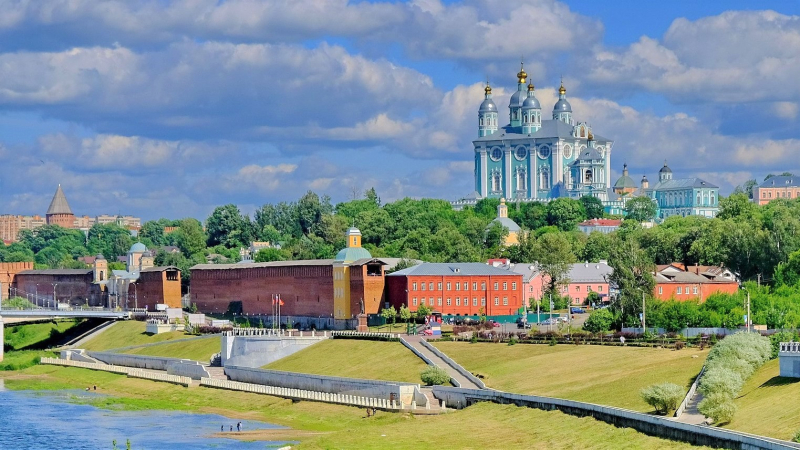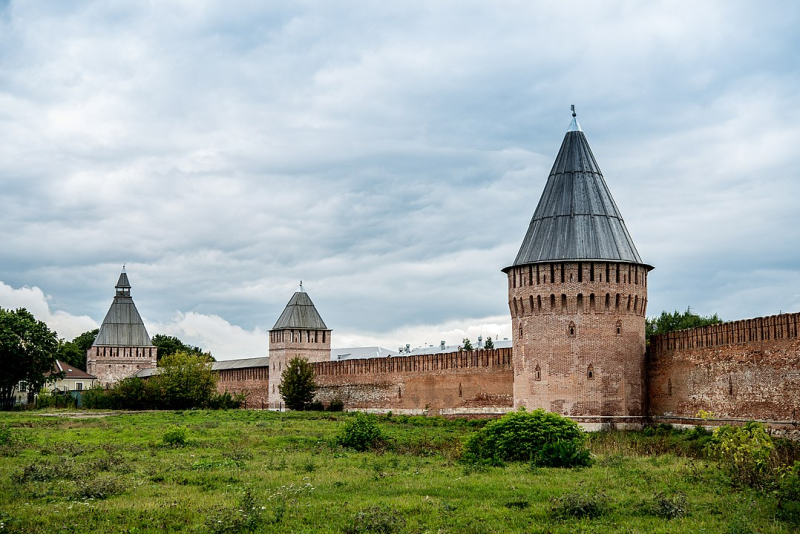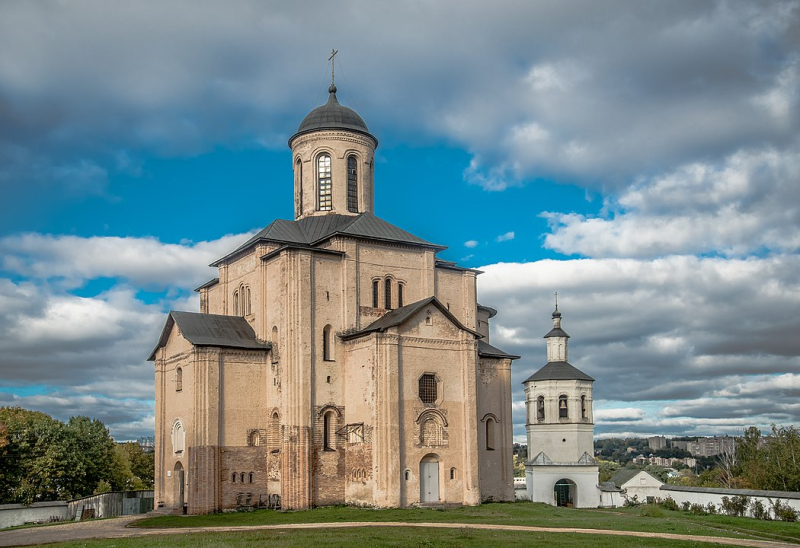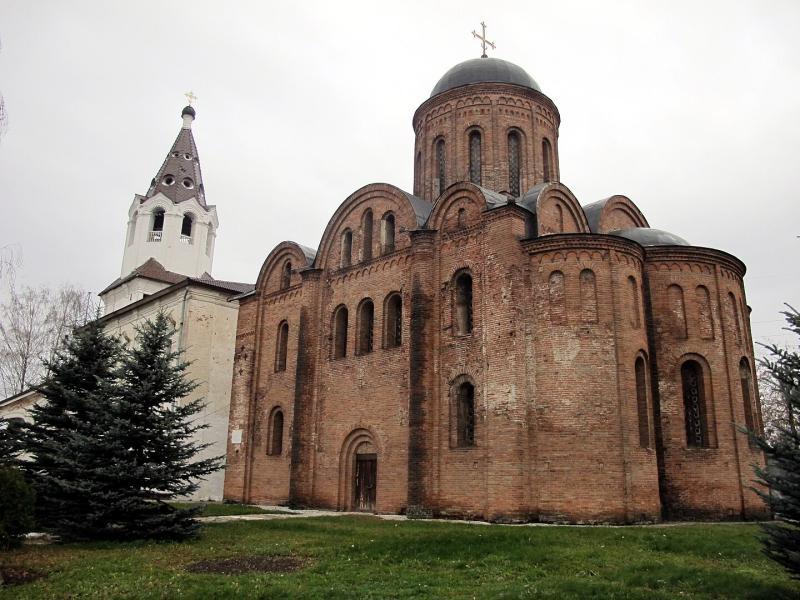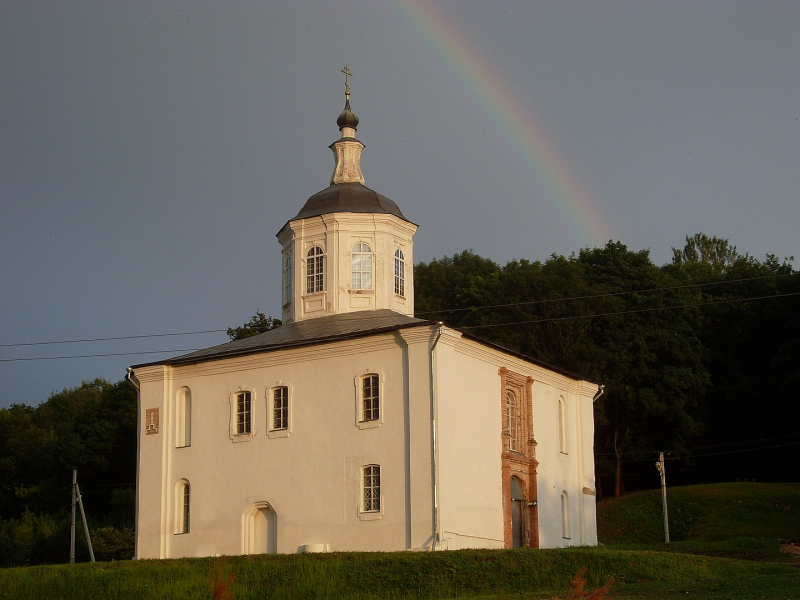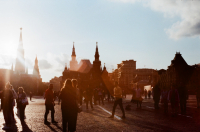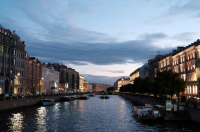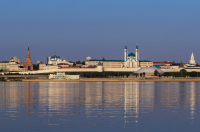Smolensk-born-and-fled – that’s how I’d describe myself, so at first I wasn’t really keen on writing this story. The question “What could I possibly tell?” kept circling in my head. Then, in preparation for it, I read this article (in Russian) and, perhaps predictably, found myself part of the local stereotype: “The three dominants of Smolensk,” it says “are the longest fortress wall in Russia, three pre-Mongol churches, and the stoic mundaneness they are perceived with by the locals.” Maybe I was too eager to get away to truly appreciate the treasures of my hometown.
So, let me tell you about Smolensk with my freshly discovered eyesight.
Who’s oldest in Russia?
Along with Pskov, Smolensk can compete for the title of the oldest city in Russia – it was first mentioned in the chronicles in the year 863 as a lively city (yes, we did learn this in school). If you are too lazy to count the town’s actual age, don’t worry, you can always find the number on display as a flowerbed on Sobornaya Gora (Cathedral Hill).
Locally called “the city on seven hills”, Smolensk sprawls on the Dnieper River; it used to be part of the major trade route from the Varangians to the Greeks. Throughout its history, there was rarely an invasion that didn’t involve Smolensk due to its location – the westernmost city in close proximity to the capital, “the key to Moscow,” as history textbooks would call it. After being its own principality in the Medieval Rus’, it was part of the Grand Duchy of Lithuania and then Poland-Lithuania, it was also occupied by Napoleon’s troops in 1812 and got nearly destroyed during WWII. Although in no hurry to forget its battle scars, Smolensk now is a quiet provincial town that did preserve a few architectural gems in its streets – even if they are disregarded by the locals.
How to get there
Traveling from St. Petersburg, you can catch the Russian Railways version of a “high-speed train:” it will take you from the Moscow Railway Station to Smolensk in the exhausting 16 hours (available every other day). A faster (about 8-10 hours) but sadly far less convenient ride is taking a bus from the Bus Terminal on Obvodny Canal. From Moscow, you can take a four-hour-long ride on a Lastochka (these go several times a day).
Sights to see
The first rule of Smolensk is “it’s not a kremlin, it’s a fortress wall.” Don’t ever call the wall “a kremlin'' in front of a local, that’s blasphemy. You see, kremlins surround only the center of a city, while the Fortress Wall was built to protect what was then the entirety of Smolensk. The longest one in Russia, it was erected by order of Ivan IV in 1602 and originally had 38 towers. Due to the city’s high strategic value – and therefore the need to protect it, it was forbidden to build anything else out of stone in the whole country during the wall’s construction. The resulting structure justified this extreme influx of resources, turning into a then-modern fortification that withstood many a war and would’ve probably remained intact if not for the need of building materials after WWII. Parts of the wall are now sprinkled all over the historical center of the town, an integral part of the everyday landscape. Two of the most accessible pieces are the ones in Lopatinskiy Garden and along Timiryazeva Street, but here is a full map. Each tower has a legend or two associated with it, which are always kept at the ready by the local tour guides.
By the way, Lopatinskiy Garden is your peek into the local soul: there is rarely a child in Smolensk who didn’t visit its amusement park at least once – imagine growing up with a fortress wall as your playhouse. Also worth seeing in the park is the black-and-gold Monument to the defenders of Smolensk, one of the seven remaining, erected after the war of 1812.
Next on our list are the three pre-Mongol churches, which are often overshadowed by the grandiose Cathedral Church of the Dormition. The latter is worth a visit, if only for its golden-laid interiors (which are a little overkill, actually, there is just too much gold) and the panoramic view on Smolensk that opens from the Cathedral Hill. However, the modest, quaint older churches are the true gems for history lovers. You can probably tour them all within an hour: Church of St. Michael the Archangel, Church of St. Peter and St. Paul on Gorodyanka, Temple of St. John the Divine. If you visit those, you’d gain points over most locals – I’ve been to only one of them and even that because it was located a minute’s walk away from my school. Inside, you can find the remaining fragments of frescoes that used to adorn their walls.
Museums-wise, you should definitely visit Konekov Museum of Sculpture for a display of sculptures that are so different, you can hardly believe they are creations of one 20th century master, Sergey Konenkov. You’d be surprised, though, how strikingly sensitive and genuine most of them feel.
Another museum to consider is a historic one, located right inside the Gromovaya Tower (this one’s hard to miss on your walk to Lopatinskiy Garden). There, you can learn more about the history of the city and, of course, the Fortress Wall.
Fun fact, the famous Soviet cosmonaut, Yuri Gagarin, was born in the Smolensk Oblast. Walk along Prospect Gagarina to check out some of the classic specimens of Stalinist architecture (like this one). Then, to get the authentic local promenade experience, explore the pedestrian Oktyabrskaya Street, with its abundance of trees and cafes for all tastes. You might end your walk in Blonye Garden – do check out the local legend, the sculpture of a deer (which was created for the last German emperor and appeared in the city after WWII), and a musical monument to composer Mikhail Glinka (twice a day, you can hear his music played all around it).
Lenina Square in Smolensk. Photo courtesy of Ivan Myakishev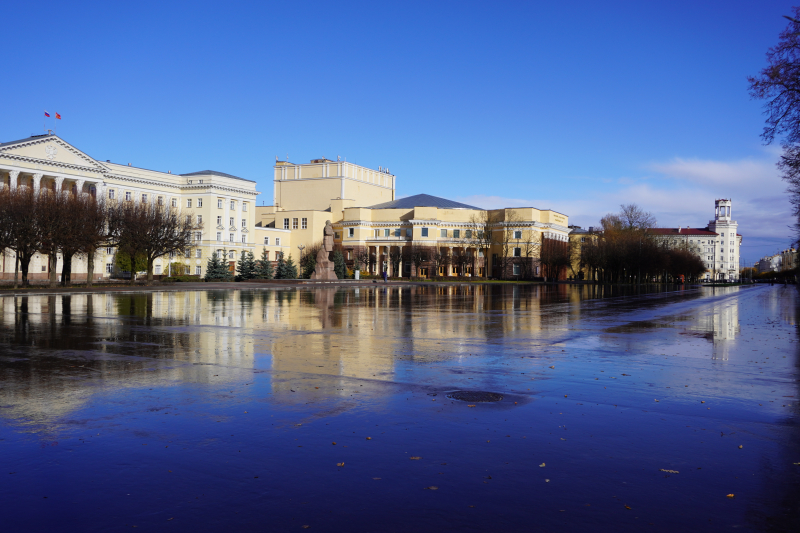
Complete your walking tour of the town by going down Bolshaya Sovetskaya Street – or shall I say, climbing down it, as it’s quite a steep hill, to see the Dnieper River and another piece of the Fortress Wall. If you look to your right there, you will see the remnants of a 19th century bridge over the river, which, in character, are also disregarded by the locals.
Local taste
What’s another piece of the Smolensk childhood puzzle? Blinis with cheese from the Domino cafe, of course. The first cafe opened something about 20 years ago (can’t believe I am that old) and quickly became a hit amongst locals for its peculiar interior and quick service. Some say the blinis have lost their original chic, but until I stopped eating eggs, I’d order them almost religiously on my visits home. More things you should try are: cherry pie, chicken soup, and baked potatoes with a special creamy sauce. You can go to any of the Dominos you spot in town, but the original one is located on Dzerdzhinskogo St.
Dzerzhinskogo St. Photo courtesy of the author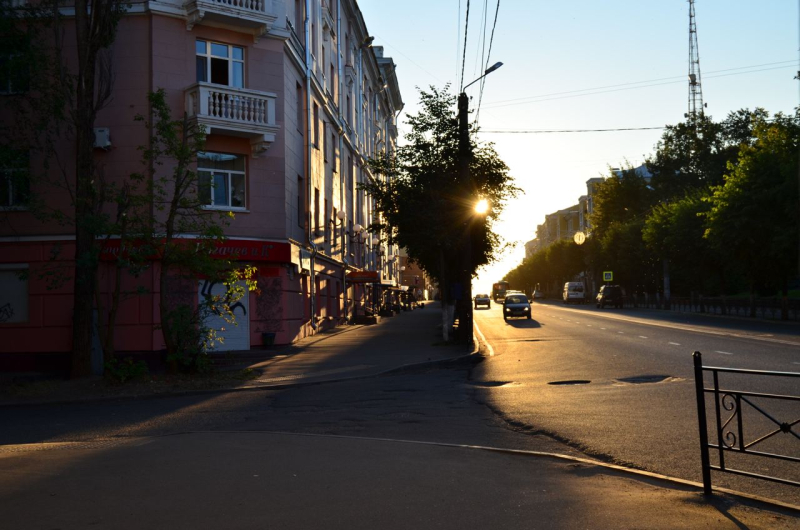
If you are craving good coffee, the specialty culture has recently reached the town, too. Within a five-minutes walk from Lopatinskiy Garden you’ll find Anderson (try the cream cheese latte), Coffeebook, Surf Coffee (a Russian coffeeshop chain), and the recently opened Seekers (their coffee is good but their croissants are to die for). For vegan coffee lovers, there’s Fika with an abundance of plant-based milk options and low-sugar desserts.
Closing remarks
Apart from its tourist sites, there was something else I enjoyed during my daily multi-kilometer walks in Smolensk as a teen – the abundance of mostly untamed greenery and the vastness your eyes can feast on from every hill, especially near the Fortress Wall. As I am finishing this article to the sounds of a medieval-themed soundtrack, I realize that there is great peace of mind to be found in acknowledging your roots. I hope you enjoy your visit to Smolensk, if you do venture there – the many sites left to visit in the Oblast will be the cherry on top.
A walk to the Oryol Tower. Photos courtesy of the author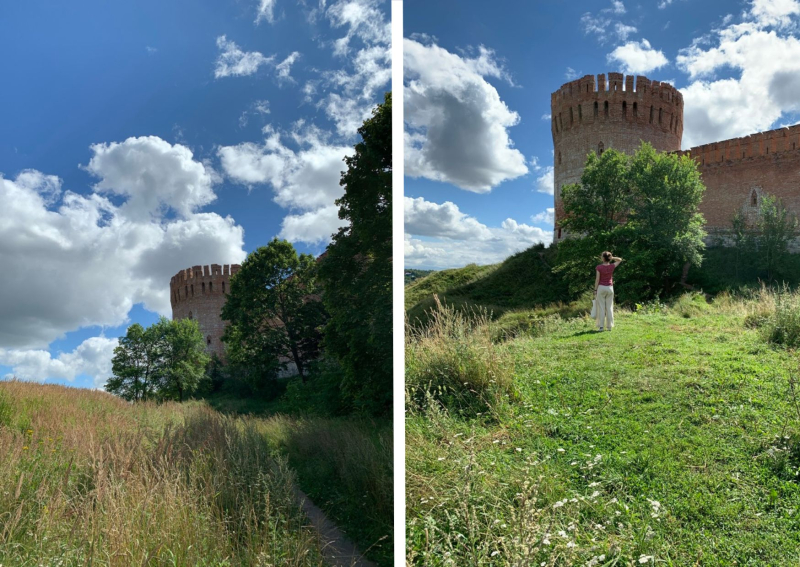
For more stories like this, explore our Travel Russia series.
